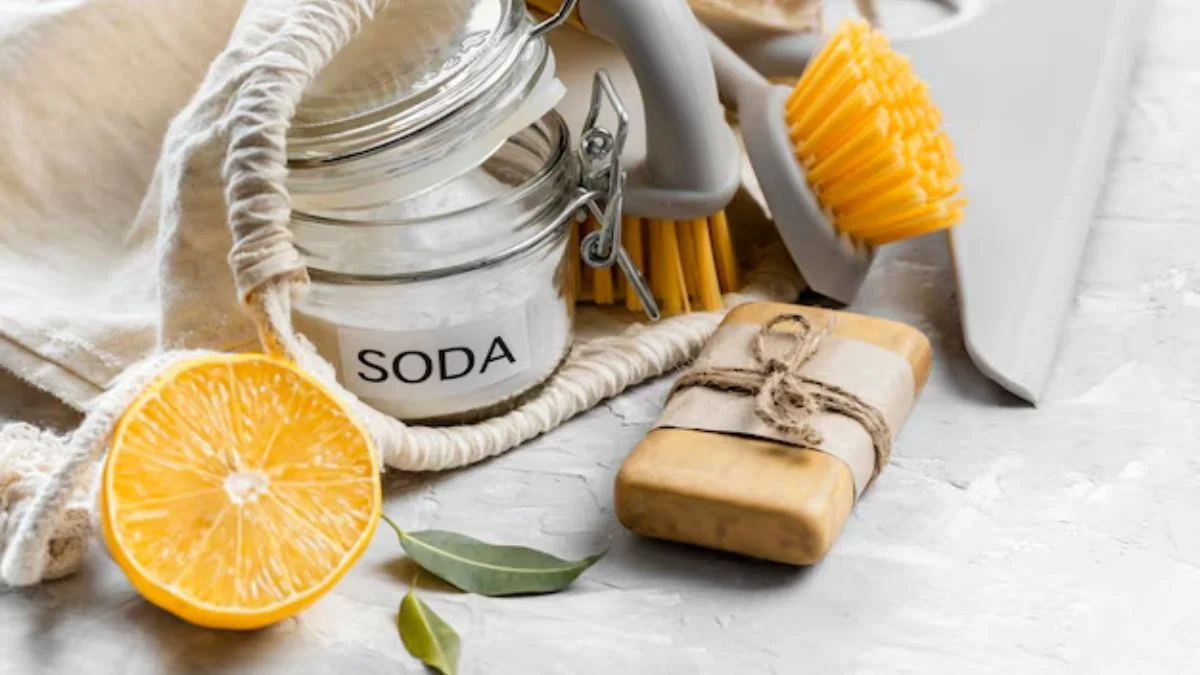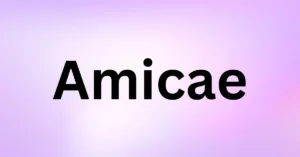Soap on a rope has been a fascinating and quirky innovation in the world of personal care since its introduction in the late 1940s. While the product might seem like a novelty at first glance, it was a practical solution to a common problem, and over time, it became a symbol of convenience and thoughtful gift-giving. In this article, we will explore the origins, evolution, cultural significance, and ongoing appeal of soap on a rope. We will also delve into the practical benefits, various forms, and its role as a nostalgic and humorous item, all while examining how the concept of soap on a rope remains relevant today.
The Origins of Soap on a Rope
Soap on a rope was invented in the late 1940s, an era marked by post-war innovation and practicality. The idea was simple: a bar of soap molded around a small loop of rope. This clever design allowed the user to hang the soap from a hook in the shower or bathtub, preventing it from becoming soggy or slipping onto the floor, which was a common frustration with traditional soap bars. Moreover, soap on a rope could be worn around the wrist, offering added convenience by keeping the soap within reach at all times.
The invention arose from the realization that soap could be molded around any object, and a rope was the perfect addition. This practical solution became especially useful for those who had trouble holding onto slippery soap bars, such as elderly individuals or those with mobility issues. By placing the rope loop over their wrist, users could enjoy a more convenient bathing experience without the hassle of constantly picking up dropped soap.
Soap on a Rope Meaning: Beyond the Surface
At its core, soap on a rope is a bar of soap with a practical modification. However, its meaning goes beyond just functionality. Over time, soap on a rope has come to symbolize an element of convenience, gift-giving, and even nostalgia. As its popularity grew in the 1970s and 1980s, particularly in the United Kingdom, it became a popular seasonal gift, especially for men. It was often marketed as a thoughtful and functional present, combining personal care with a playful twist.
The meaning has evolved as it became an iconic product associated with humor, particularly with themed soaps like “Pope on a Rope” and other novelty versions. These playful iterations show how soap on a rope has transcended its original purpose and taken on a lighthearted cultural significance.
Popularity in the 1970s: A British Sensation
The 1970s was the golden age of soap on a rope, especially in the United Kingdom. During this time, the product was marketed as a thoughtful and practical gift for men, often given during the Christmas season or as a Father’s Day present. The idea was simple: soap on a rope was useful, functional, and eliminated the frustration of dropping soap. Additionally, it could be hung in the shower or bath, ensuring it stayed dry between uses.
During the 1970s, the market saw a rise in themed soap on a rope products, catering to specific interests or humorous ideas. Brands and manufacturers capitalized on the growing trend by creating soaps shaped like cars, tools, and even animals. These novelty versions helped solidify soap on a rope as not just a hygiene product but also a fun and memorable gift idea.
The Role of Soap on a Rope in Popular Culture
As the product gained popularity, soap on a rope became more than just a hygiene product—it became a cultural icon. The playful nature of the product, along with its quirky design, made it a topic of conversation and even a symbol of humor. In the 1990s, novelty versions such as the “Pope on a Rope” soap were sold during papal visits to the United States and the United Kingdom. These playful takes on the classic soap further solidified its place in the public consciousness.
This also found a niche market in men’s grooming products, often marketed as a more masculine version of regular soap. Its appeal lay not only in its functionality but also in its ability to serve as a humorous or ironic gift. Throughout the 1980s and 1990s, soap on a rope continued to be marketed as a niche product, appealing to those with a taste for novelty and nostalgia.
The Benefits of Soap
While soap on a rope is often seen as a quirky or nostalgic item, its practical benefits should not be overlooked. Some of the key advantages include:
- Prevents Slipping: Traditional soap bars can become slippery and difficult to hold, especially when wet. Soap on a rope eliminates this problem by allowing users to hang the soap from their wrist or a hook.
- Keeps Soap Dry: One of the biggest issues with regular soap bars is that they can become mushy if left in a soap dish. By hanging soap, it can dry between uses, extending its lifespan.
- Convenience: For people with mobility issues, arthritis, or difficulty bending down, it offers a convenient alternative. The looped rope ensures that the soap remains within reach at all times.
- Travel-Friendly: Many soap on a rope products are designed to be portable and easy to take on trips. The rope allows users to hang the soap in unfamiliar showers or bathtubs without needing a soap dish.
- Gift Appeal: This is often given as a gift, especially during holidays or special occasions. Its novelty factor makes it an appealing option for those looking for a unique present.

Soap on a Rope: A Niche and Nostalgic Market
Despite its origins as a practical product, soap on a rope has also carved out a niche market for itself in the world of gifts and novelty items. Throughout the 1980s and 1990s, it became a popular item for men, particularly as a humorous or ironic gift. It was seen as both functional and fun, making it a memorable gift choice.
The market for soap on a rope has expanded to include various designs, fragrances, and themes, catering to a wide range of tastes. From luxury versions made with high-quality ingredients to novelty soaps shaped like sports equipment or animals, it continues to captivate consumers looking for something unique.
The Evolution of Soap on a Rope: Modern Trends
In recent years, it has seen a resurgence in popularity as part of the broader trend of retro and nostalgic products. Consumers are increasingly drawn to items that evoke memories of the past, and soap on a rope fits this bill perfectly. Brands have recognized this trend and have begun offering updated versions of the classic product, often incorporating modern design elements, natural ingredients, and eco-friendly packaging.
It has also found a place in the wellness and self-care market. Many modern versions are made with organic or natural ingredients, appealing to health-conscious consumers. Additionally, luxury soap brands have begun offering soap on a rope in elegant packaging, making it a popular gift item once again.
Soap on a Rope as a Gift Idea
One of the lasting appeals of soap on a rope is its suitability as a gift. Whether for Christmas, birthdays, or Father’s Day, this remains a thoughtful and practical present. Its ability to combine functionality with humor makes it a unique choice for those looking to give something memorable.
Novelty versions, such as “Pope on a Rope” or soaps shaped like famous landmarks or animals, add an element of fun to the gift. For those seeking a more refined version, luxury soap on a rope products made with high-quality ingredients and stylish packaging offer a more sophisticated option.
Conclusion
Soap on a rope is much more than just a bar of soap with a rope attached. Its rich history, cultural significance, and practical benefits have ensured its place as an iconic product in the world of personal care. From its invention in the 1940s to its peak popularity in the 1970s, and its continued presence as a nostalgic and humorous gift, soap on a rope has proven to be a lasting and beloved innovation. Whether as a functional tool for the shower or a quirky gift for a loved one, soap on a rope continues to captivate consumers with its unique charm and practicality.
Frequently Asked Questions (FAQs)
1. What is the purpose of soap on a rope?
This was invented to prevent soap bars from slipping out of hands or becoming soggy in a soap dish. The rope allows the soap to be hung up, keeping it dry and within easy reach during use.
2. Who invented soap on a rope?
This was invented in the late 1940s by soap makers who realized they could mold soap around a loop of rope for added convenience.
3. Why was soap on a rope popular in the 1970s?
In the 1970s, soap on a rope became a popular gift, especially for men, due to its practicality and novelty. It was often marketed as a seasonal gift, particularly during Christmas or Father’s Day.
4. Is soap on a rope still popular today?
Yes, it has seen a resurgence in popularity as part of the retro and nostalgia trend. It is also favored for its convenience and eco-friendly qualities, with many modern versions being made with natural ingredients.
5. What are some novelty versions of soap on a rope?
Over the years, novelty versions of soap on a rope have included humorous options like “Pope on a Rope,” as well as soaps shaped like sports equipment, animals, and even famous landmarks.
6. Can soap on a rope be used as a travel item?
Yes, this is travel-friendly. The looped rope allows users to hang the soap in unfamiliar showers or bathrooms, making it convenient for use while traveling.









